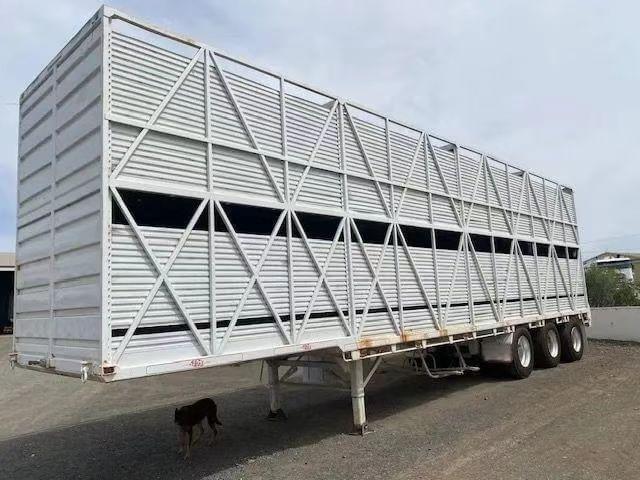Transporting livestock is a crucial part of the agricultural industry, and using livestock trailers properly is essential for the well-being of the animals and the efficiency of the operation. Here are some key points to keep in mind when using livestock trailers.
1. Safety First
Inspect the Trailer
Before each use, thoroughly inspect the trailer. Check for any structural damage, such as cracks or loose parts. Ensure that the floor is secure and free of holes or sharp objects that could injure the animals. The doors and gates should open and close smoothly and securely. A well-maintained trailer reduces the risk of accidents and injuries.
Secure the Load
When loading livestock, make sure they are evenly distributed to balance the weight. This helps in maintaining the stability of the trailer during transit. Use appropriate restraints if necessary, but avoid causing undue stress to the animals. For example, cattle should have enough space to stand comfortably without being cramped.
Drive Carefully
The driver plays a vital role in ensuring a safe journey. Drive at a moderate speed, avoiding sudden stops, sharp turns, and rapid accelerations. These actions can cause the animals to lose balance and get injured. Stick to well-maintained roads whenever possible to minimize jolts and bumps.

2. Animal Welfare
Comfortable Environment
The interior of the livestock trailer should provide a comfortable environment for the animals. Ensure there is adequate ventilation to prevent overheating or suffocation. In hot weather, consider using shades or fans to keep the trailer cool. Conversely, in cold weather, provide insulation to protect the animals from the cold.
Proper Loading Density
Do not overload the trailer. Each type of livestock has specific space requirements. For example, pigs need more space per animal than sheep. Overcrowding can lead to stress, injuries, and even death. Follow the recommended loading densities for the specific species you are transporting.
Water and Food
For long journeys, it is essential to provide water and, if necessary, food for the animals. Dehydration can be a significant risk, especially in hot weather. Make sure the water containers are secure and easily accessible to the animals. For some species, like cattle, it may also be necessary to provide hay or other feed during extended trips.
3. Legal and Regulatory Compliance
Licensing and Permits
Check the local regulations regarding the licensing and permits required for transporting livestock. Different regions may have specific rules about the type of trailer, the number of animals allowed, and the routes you can take. Failure to comply with these regulations can result in fines and other penalties.
Health Certificates
Many areas require health certificates for livestock being transported. These certificates ensure that the animals are free from contagious diseases and do not pose a risk to other livestock or public health. Make sure to obtain the necessary health certificates before transporting the animals.
Record Keeping
Maintain accurate records of the livestock being transported, including the number of animals, their species, and the origin and destination. This information may be required for regulatory purposes and can also be useful for tracking and managing your livestock operations.
4. Maintenance and Cleaning
Regular Maintenance
Regular maintenance of the livestock trailer is crucial for its longevity and safety. Schedule routine checks and services, such as lubricating moving parts, checking the tires, and inspecting the electrical systems. A well-maintained trailer will be more reliable and safer for transporting livestock.
Cleaning After Each Use
After each use, thoroughly clean the trailer to remove any manure, dirt, or debris. This not only keeps the trailer hygienic but also reduces the risk of disease transmission. Use a pressure washer if possible, and disinfect the interior to ensure a clean environment for the next load of livestock.
Conclusion
Using livestock trailers effectively requires attention to safety, animal welfare, regulatory compliance, and proper maintenance. By following these key considerations, you can ensure a safe and comfortable journey for the livestock, comply with legal requirements, and prolong the life of your trailer. Whether you are a farmer transporting your animals to market or a livestock hauler, these guidelines will help you make the most of your livestock trailer while prioritizing the well-being of the animals.
